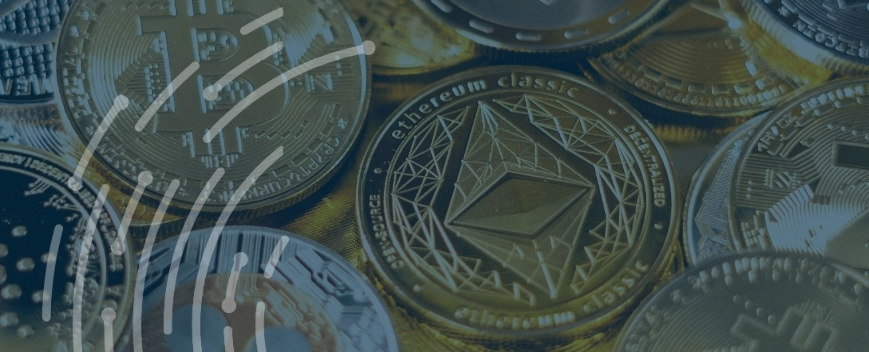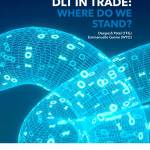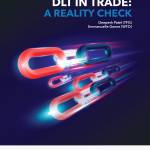The role of cryptocurrencies, stablecoins, and CBDCs in international trade transactions

Contents
Cryptocurrencies
When cryptocurrencies were originally conceptualised in the wake of the 2008 financial crisis, they seemed able to address many of the shortcomings and inefficiencies of the cross-border payments system.
Remittances and fiat currency devaluation have driven cryptocurrency use in developing countries, in particular in Africa.
Unfortunately, many of these original crypto-assets, like Bitcoin, still suffer from severe price volatility making them impractical as a facilitation method for many international trade transactions.
To learn more about some of the top cryptocurrencies, check out these guides:
Stablecoins
Anecdotal evidence also suggests that the use of cryptocurrencies and stablecoins by traders from the developing world to settle international trade transactions is increasing.
A stablecoin has many of the same features as a cryptocurrency, but it stabilises its price by linking its value to a certain pool of tangible assets.
Stablecoins are particularly popular in East Asia as a result of the Chinese government’s decision in 2017 to ban exchanges of yuan for cryptocurrency.
According to the “Chainalysis 2020 Geography of Cryptocurrency Report”, the most popular stablecoin is the controversial Tether, which is claimed to be “tethered” to the value of national currencies like the US dollar, the euro, and the offshore Chinese yuan.
The report provides anecdotal evidence that a significant share of cryptocurrency and stablecoin transactions between Eastern Asia and Africa, and to a lesser extent Russia, are for business purposes.
While stablecoins could help to address the value volatility issues that plague traditional crypto-assets in international trade, they are not without their own challenges.
The G7 Working Group on Stablecoins identifies several challenges facing stablecoins, including legal certainty, sound governance, data privacy, and tax compliance.
Stablecoins that reach a global scale also offer challenges with regard to monetary policy, financial stability, and fair competition.

Central bank digital currencies (CBDCs)
Central bank digital currencies (CBDCs) can be defined as money that a central bank creates in electronic form for the general public, which can be used as legal tender alongside other forms of central bank money.
Since these digital tokens are issued by a nation’s monetary authority or central bank, they are backed only by the faith and credit of the issuing government, much like the fiat money you have in your bank account today.
Many people think of CBDCs as a cryptocurrency that is run by the government, and although the two concepts do have similarities, their differences are much more numerous and consequential.
The most important difference is that, in the case of CBDCs, the central bank that issues the tokens can retain total control over when, where, and how they are used, as well as how many tokens are issued.
This is quite different from Bitcoin and many other cryptocurrencies, where the total supply of tokens is fixed from the outset and is built into the underlying source code of the protocol.
Many in the crypto community would baulk at the idea of giving such a high degree of control to a centralised entity, but the CBDC system of centralised control would, in some ways, is quite similar to the current fiat system.
Today, central banks use monetary policy to manipulate the supply of money in an economy, in an effort to control inflation and employment, and to help protect their nations from economic disasters.
The only difference with CBDCs is that, rather than having to print those weird paper banknotes that grandma always puts in your birthday card, the central bank could control the money supply with a few clicks of a mouse.
Governments around the world are exploring the potential that CBDCs could have in their economies largely as a reaction to the rise of Bitcoin and other cryptocurrencies.
As the popularity of cryptocurrency continues to grow, and increasingly more mainstream firms and institutions incorporate digital coins into their operations, fiat currencies and central banks are starting to feel the pressure.
Individuals and companies are shifting away from using cash, and central banks want to ensure that they retain some control over the monetary innovations that are taking place within their borders.
By using a CBDC, a central bank would be able to track all of the digital currency it issues in real-time.
On the one hand, this may seem like a Machiavellian mechanism for destroying individual privacy, but on the other, it would provide governments with an effective tool to combat financial crime and money laundering.
The benefits of CBDCs for central banks may come at a cost for commercial banks.
Many experts speculate that widespread adoption of CBDCs would cause commercial banks to lose upwards of 20% of their deposits and therefore lose 20 basis points of credit spreads
This would happen because a CBDC would allow some clients of commercial banks to deal directly with the central bank.
Without the need to go through a commercial bank, merchants would be able to avoid the heavy transaction fees that are often levied by these incumbent intermediaries.
With any CBDC, each individual citizen, household, or corporation could securely possess a central bank-backed currency in their own digital wallet.
While this would not eliminate the need for banks entirely, it would reduce our reliance on them.
In today’s world, you are not very likely to keep a large stack of physical cash tucked away in your mattress – you would instead put it in a bank where it will be kept safe.
But with a digital wallet, your CBDC is already safe.
Many individuals and institutions would therefore prefer to avoid the high fees of using a bank account and would opt to hold a CBDC in their fully secure and 24/7 accessible digital wallet instead.
This would inevitably take a large chunk out of commercial bank revenues in the process.
Publishing Partners
- Blockchain & DLT Resources
- Cryptocurrency Resources
- All Topics
- Podcasts
- Videos
- Resources
- Conferences
















